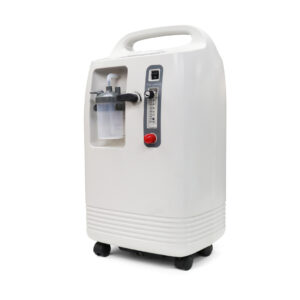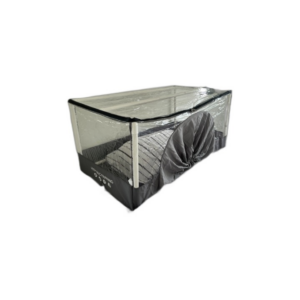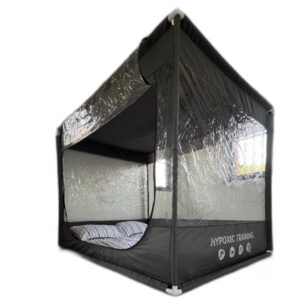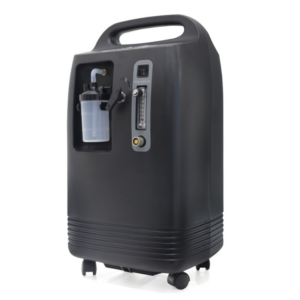Use Cases
Private Individuals
Fitness Centres
High Altitude Training Facility
Private Individuals
Enhanced Cardiovascular Fitness
Regular training in a hypoxic environment can improve cardiovascular efficiency, as the body learns to utilize oxygen more effectively. This is particularly beneficial for endurance athletes or anyone looking to improve their cardiovascular health.
Acclimatization for High-Altitude Activities
For individuals planning to engage in high-altitude hiking, mountaineering, or skiing, using a hypoxic generator can help in acclimatizing to the lower oxygen levels found at high altitudes, reducing the risk of altitude sickness.
Improved Athletic Performance
Athletes across various sports can train in hypoxic conditions to enhance their performance. This method, known as hypoxic training, is believed to increase red blood cell count and improve muscle efficiency.
Weight Loss and Metabolism Boost
Training in a hypoxic environment can potentially increase metabolism, aiding in weight loss efforts. The body may burn more calories when working in low-oxygen conditions.
Stress Resilience and Mental Toughness
Exposing oneself to challenging environments like low-oxygen conditions can enhance mental toughness and stress resilience, as it requires adaptation and coping strategies
Improved Sleep Quality
Some individuals may find that training in hypoxic conditions helps in managing sleep disorders such as sleep apnea, as it strengthens respiratory muscles and improves oxygen efficiency.
Hobby-Related Uses:
For those interested in activities like amateur astronomy or drone flying at higher altitudes, training with a hypoxic generator can prepare the body for these specific hobbies.
Personal Challenges and Goals
For those who enjoy setting personal challenges, training in a hypoxic environment can be a unique way to push personal limits and achieve new goals.
Fitness Centres
Unique Selling Proposition (USP)
Offering hypoxic training can distinguish a fitness center from its competitors. It provides a novel and cutting-edge training option that can attract a diverse client base, particularly those interested in high-performance sports or unique fitness experiences.
Enhanced Athletic Performance
Training in a hypoxic environment can improve athletic performance. It’s known to increase red blood cell count and enhance oxygen delivery to muscles, which is beneficial for endurance athletes, cyclists, runners, and other sports enthusiasts.
Altitude Training Benefits
Hypoxic training simulates high-altitude conditions, allowing fitness enthusiasts and athletes to reap the benefits of altitude training without having to travel to high-altitude locations. This can lead to improved endurance, stamina, and overall fitness.
Attracting Elite Athletes
Fitness centers with hypoxic generators may attract elite athletes seeking specialized training environments, thus enhancing the center’s reputation and possibly leading to partnerships or sponsorships.
Weight Loss and Metabolism
Hypoxic training can potentially boost metabolism and aid in weight loss efforts, making it an attractive option for those looking to lose weight in an efficient and innovative way.
Customized Training Programs
With hypoxic generators, fitness centers can offer customized training programs for individuals or groups with specific goals, catering to a wide range of clients from amateur fitness enthusiasts to professional athletes.
Increased Membership and Revenue Streams
Offering exclusive hypoxic training sessions or memberships can create new revenue streams. Fitness centers can charge a premium for access to these specialized training sessions.
Marketing and Promotion
Hypoxic training is a unique feature that can be heavily marketed and promoted to create buzz and attract new members, leveraging social media, success stories, and testimonials.
Other Industries
High-Altitude Training Facilities for Athletes
Apart from fitness centers, specialized training facilities for athletes, especially those in endurance sports like running, cycling, or swimming, could use these machines to simulate high-altitude conditions, improving athletes’ performance and endurance.
Medical Research and Therapy Centers
These generators could be used in medical research facilities for studying the effects of hypoxia on the human body. They could also be utilized in therapeutic settings for treating certain medical conditions that benefit from controlled exposure to lower oxygen levels.
Wellness and Spa Centers
Wellness and spa centers could incorporate hypoxic environments as part of their offerings for health and wellness therapies, promoting improved metabolism, weight loss, or other health benefits.
Military and Emergency Response Training
Military and emergency response teams often operate in high-altitude or oxygen-deprived environments. Hypoxic generators could be used in their training programs to simulate these conditions and prepare them for real-life scenarios.
Climbing and Mountaineering Schools
These schools could use hypoxic generators to acclimatize climbers to high-altitude conditions before they embark on expeditions to mountains like Everest or Kilimanjaro.
Scientific and Environmental Research Labs
Research facilities studying environmental conditions, plant growth, and animal behavior in varying oxygen levels could find these machines beneficial.
Aerospace and Aviation Training
Pilots and astronauts could benefit from training in hypoxic conditions to prepare for situations where oxygen levels are compromised.
Educational Institutions
Universities and colleges with sports programs or research departments could use these machines for educational and training purposes.




